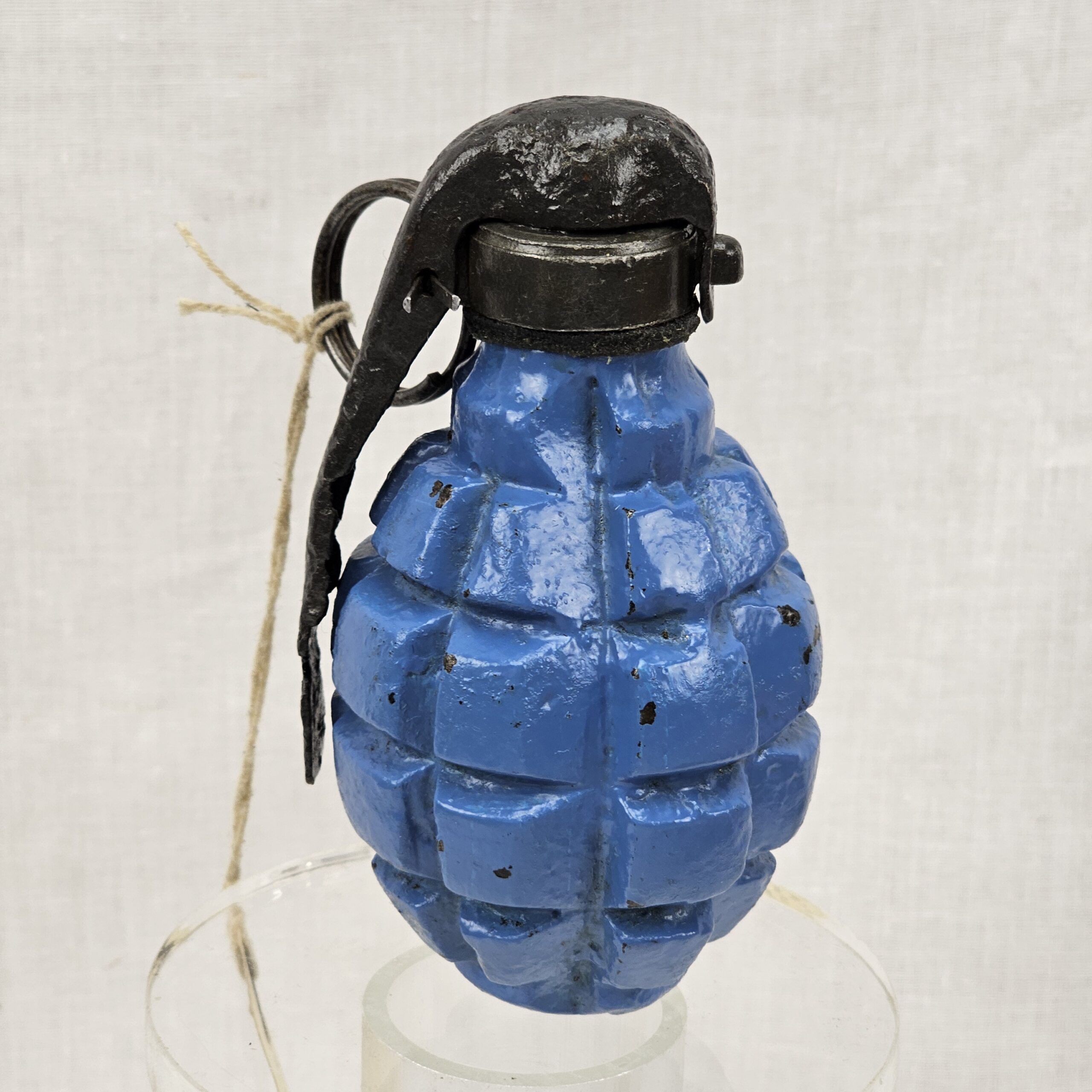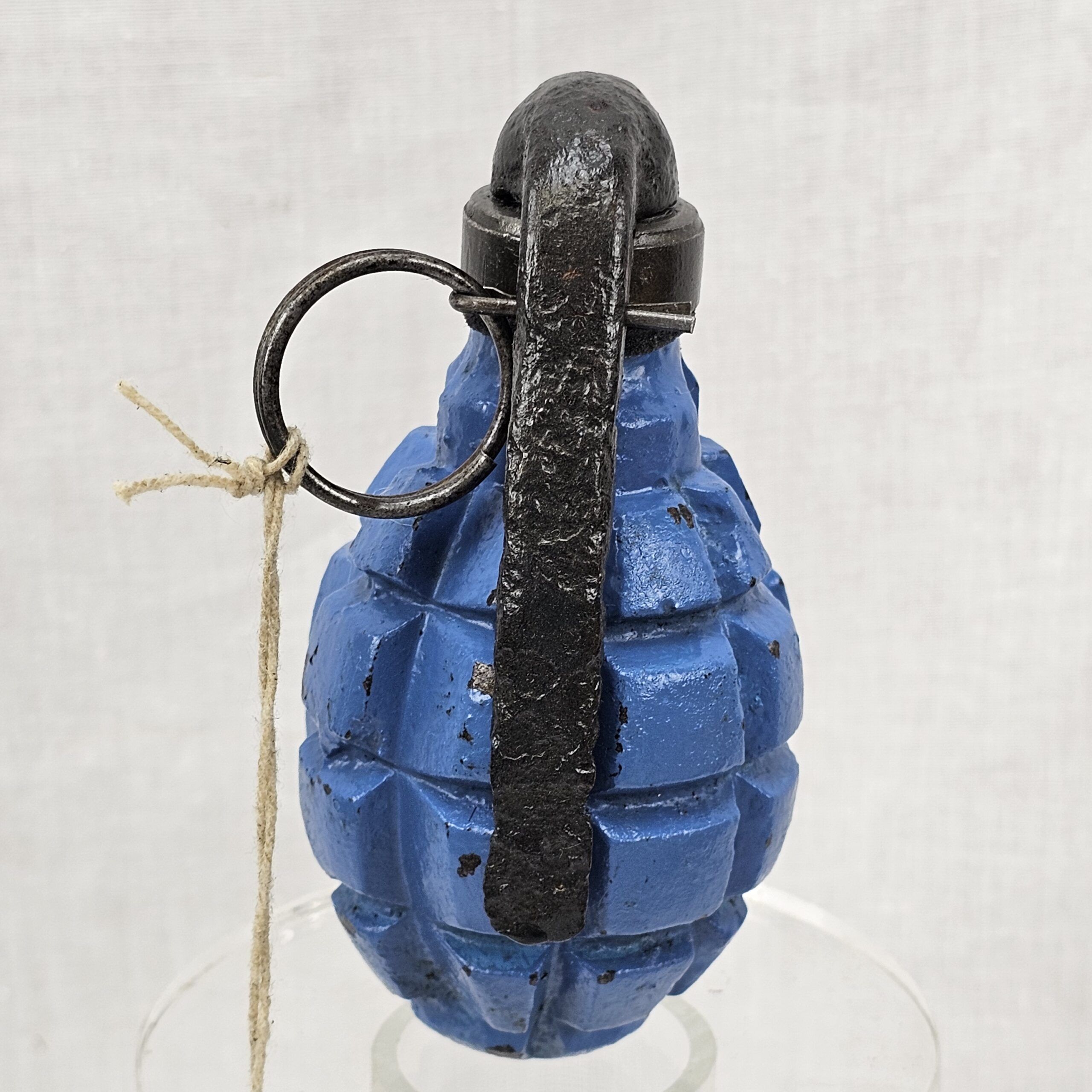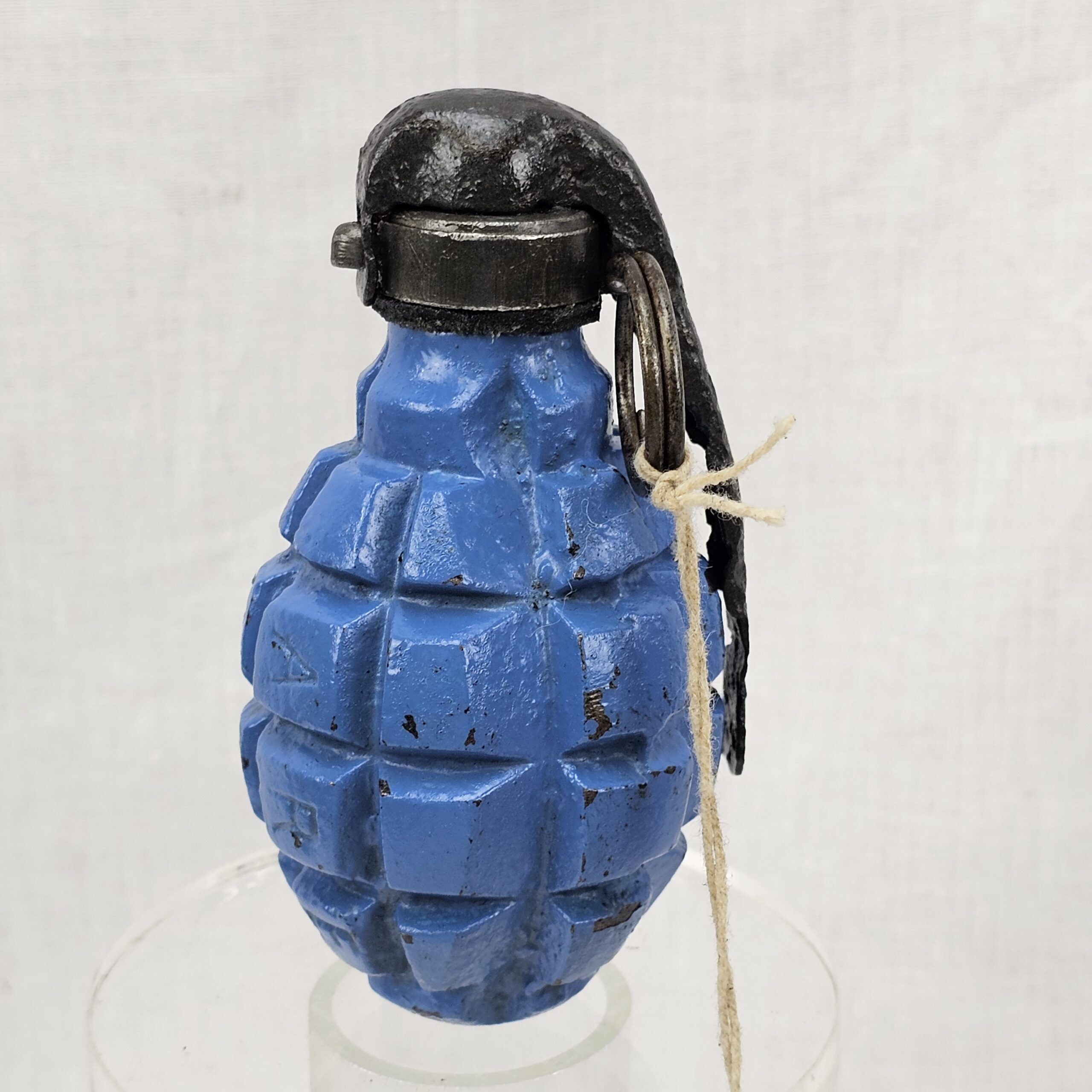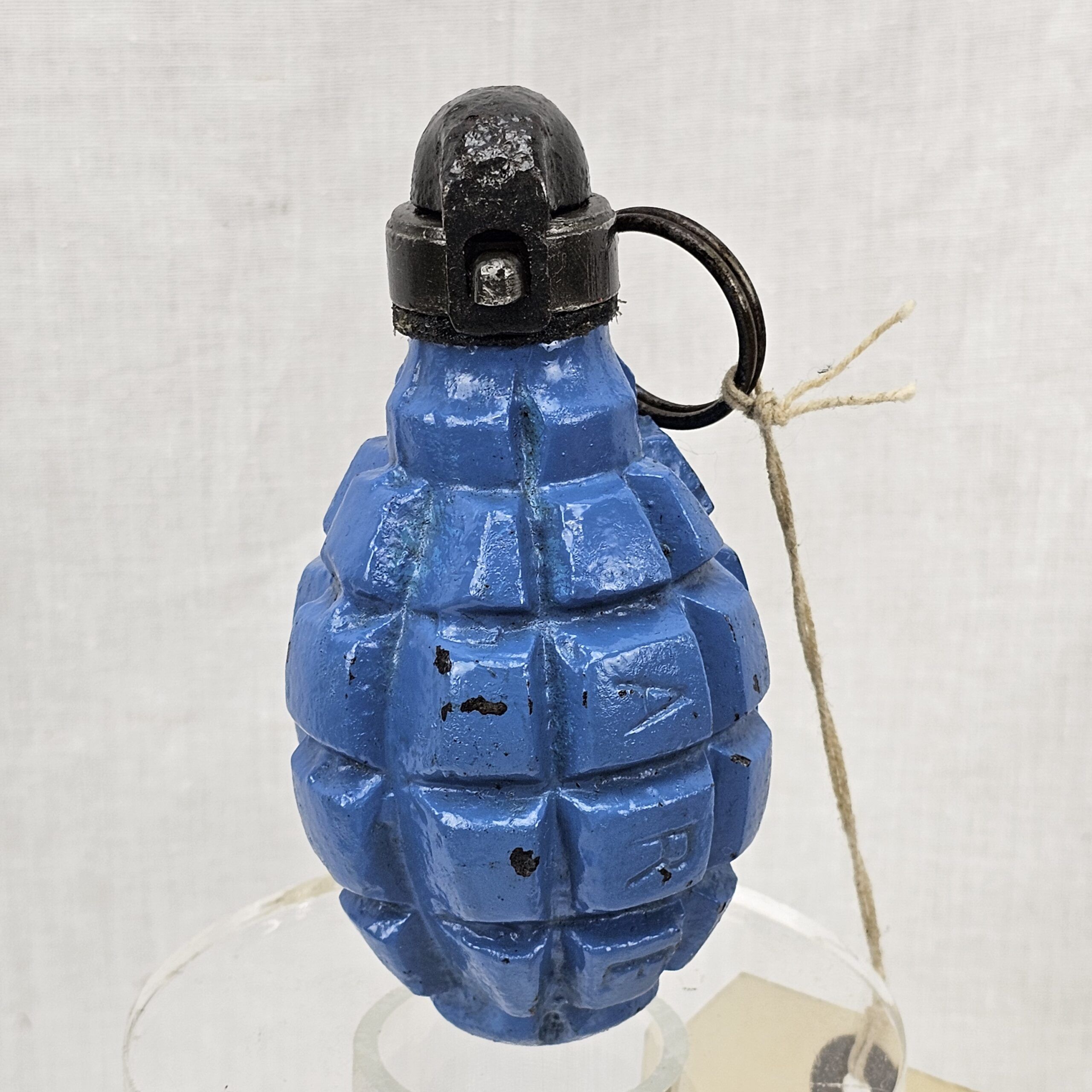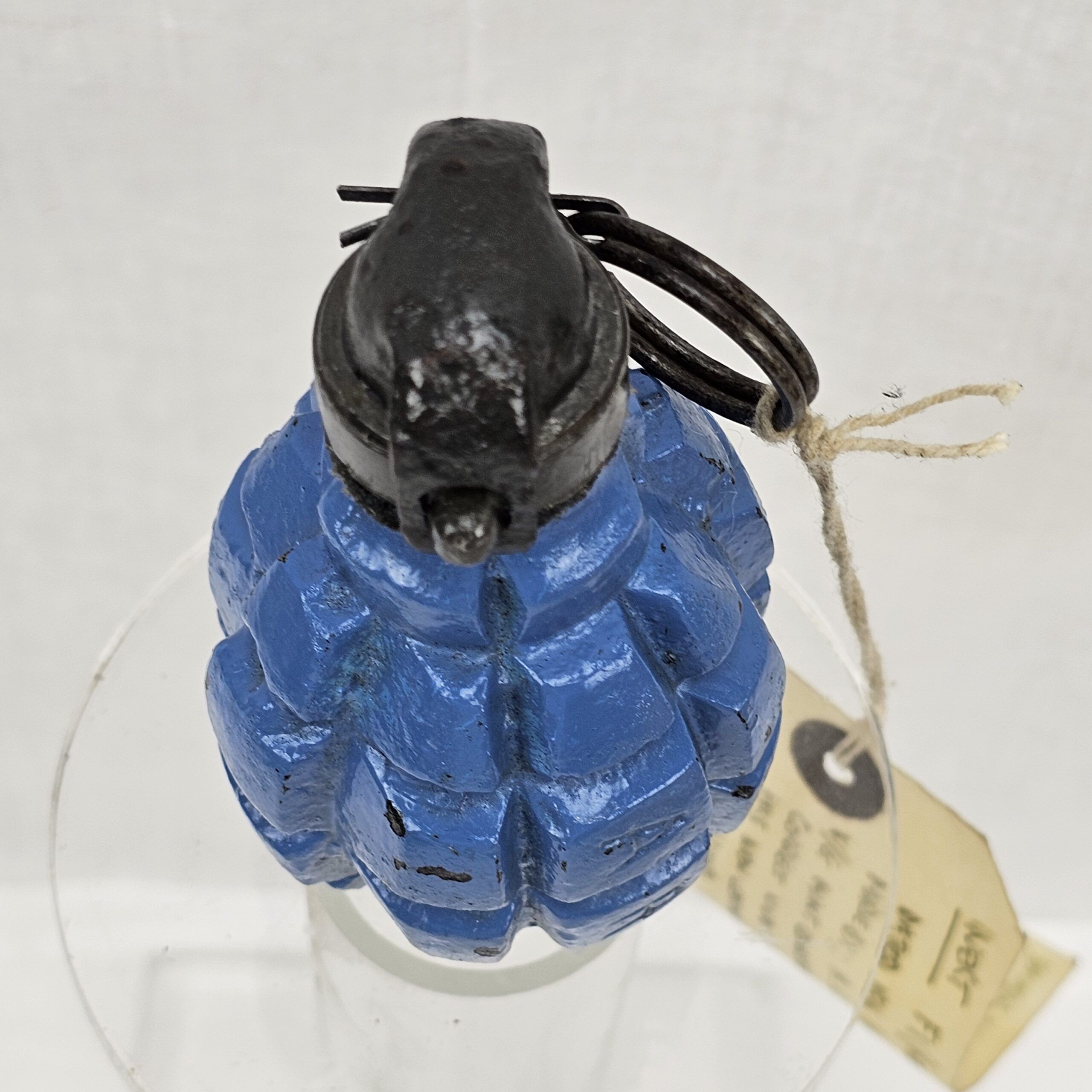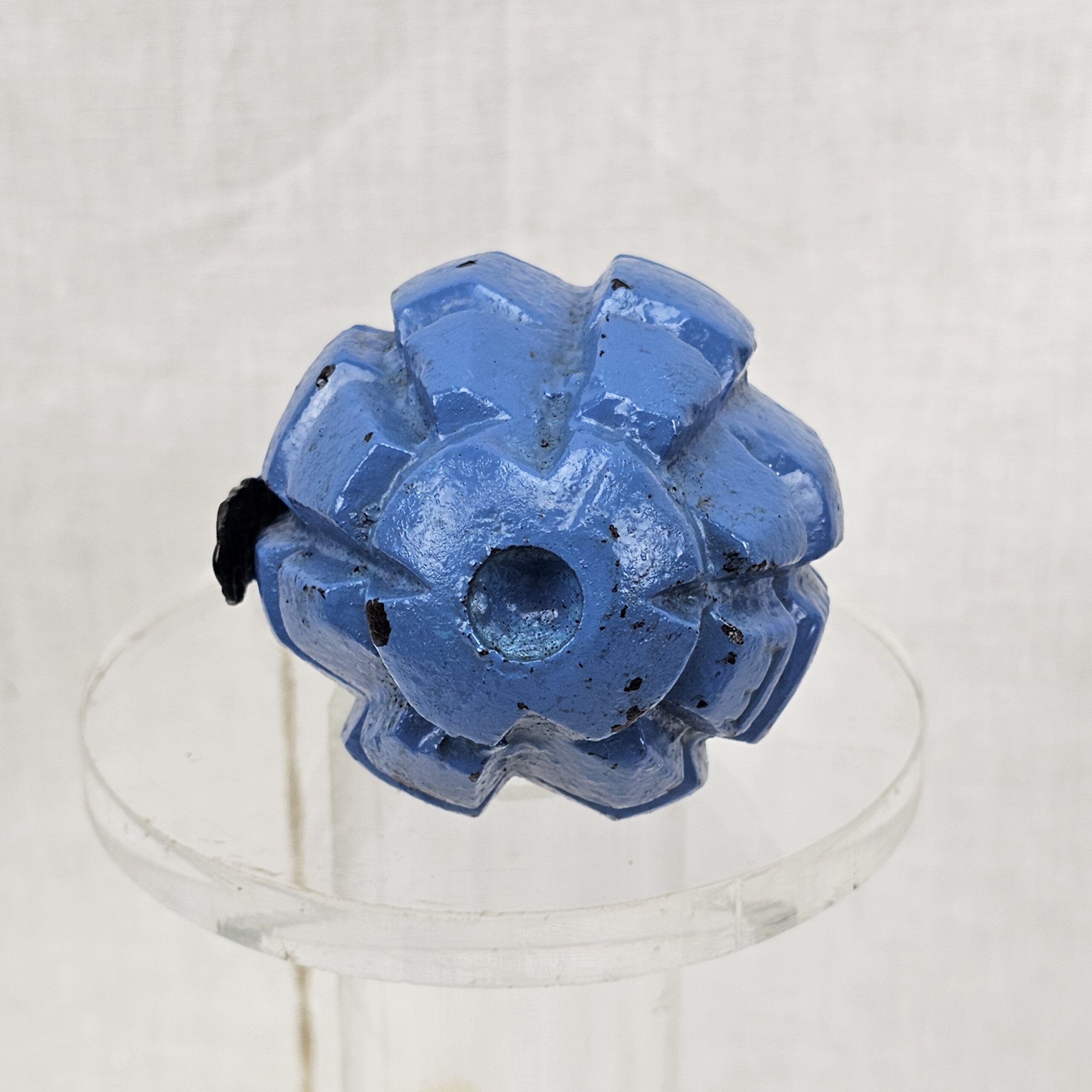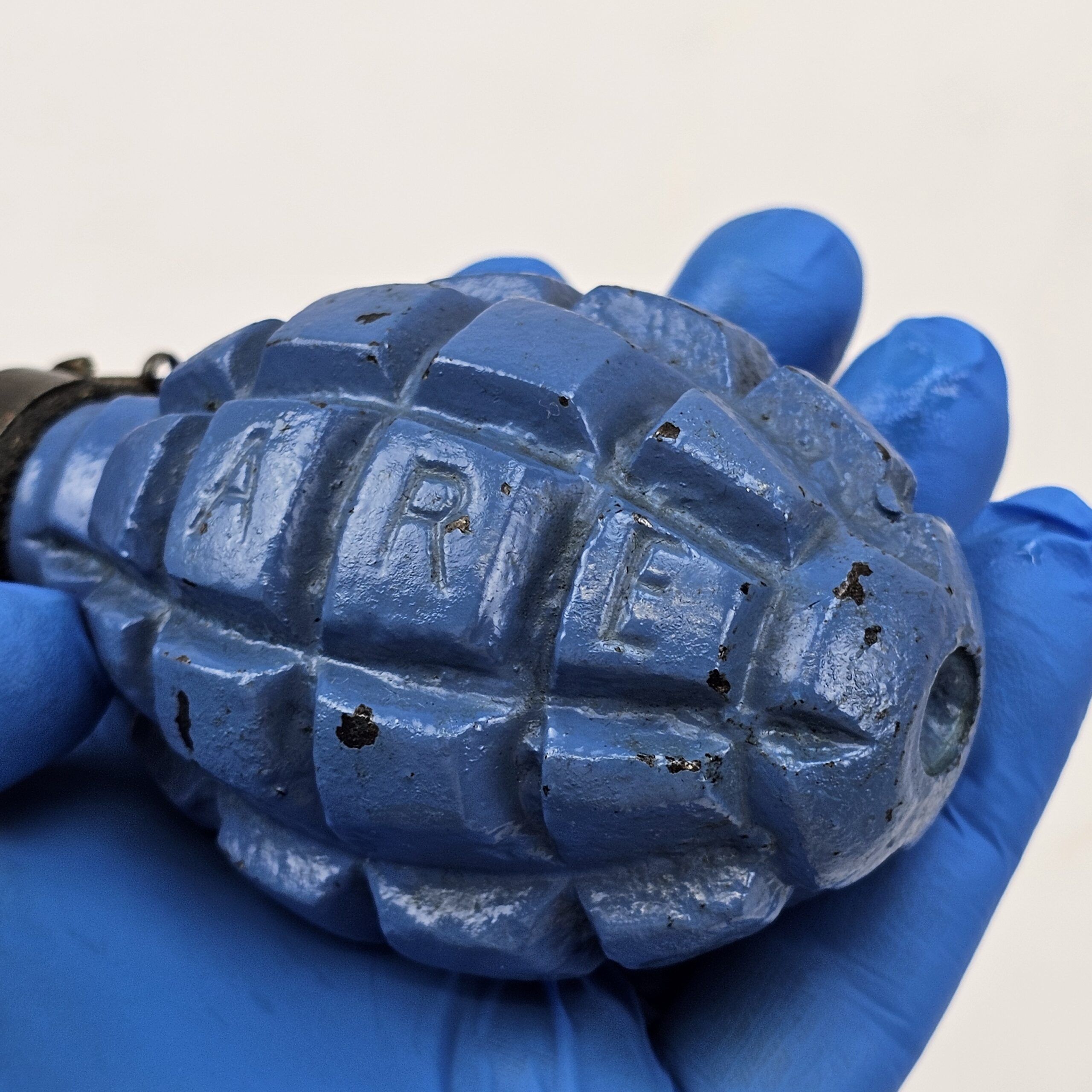~ Rare 1916 Inert F1 Fusante No. 1 Defensive Grenade ~
The 1916 Inert F1 Fusante No. 1 defensive grenade is an iconic piece of military equipment used by the French forces during World War I. Its design and historical significance provide insight into the early 20th-century warfare and the evolution of grenade technology.
Historical Background
Development and Design
Introduction: The F1 grenade was introduced by the French military in 1915 during World War I. It was developed in response to the need for a more effective hand grenade in the trench warfare that characterized much of the conflict.
Designer: The grenade was designed by a French engineer, whose goal was to create a reliable and effective defensive grenade.
Defensive Role: As a defensive grenade, the F1 was intended to be thrown from a protected position, such as a trench, due to its substantial blast radius, which could be dangerous to the thrower if used in open ground.
Technical Specifications
Design Features
Body: The F1 grenade has a distinct cylindrical shape with a serrated, or segmented, cast iron body. These segments were designed to aid in fragmentation, creating numerous sharp pieces upon detonation to maximize damage within its effective range.
Fuse: The F1 used a time-delay fuse, typically the Fusante No. 1, which was a percussion-activated fuse that would ignite the explosive charge after a set delay, usually around 5-7 seconds. This delay allowed the thrower to safely deploy the grenade and take cover.
Color and Markings
Inert Grenade: The inert versions of the F1 grenade were used for training purposes. These inert grenades were often marked or colored differently to distinguish them from live grenades.
Markings: The markings on inert grenades typically included stamps or painted indicators to denote their non-explosive nature. Specific markings might vary, but they generally included terms like “INERT” or other identifiable codes.
Usage
World War I
Trench Warfare: The F1 grenade was particularly suited to the trench warfare of World War I, where soldiers could throw the grenade over the parapet into enemy trenches or no man’s land.
Deployment: French soldiers used the F1 extensively, and it became one of the most recognized grenades of the war. Its design influenced many subsequent grenade models used by other countries.
JA#18865BE0_4368161870


